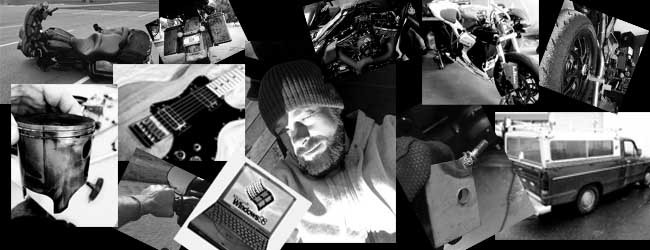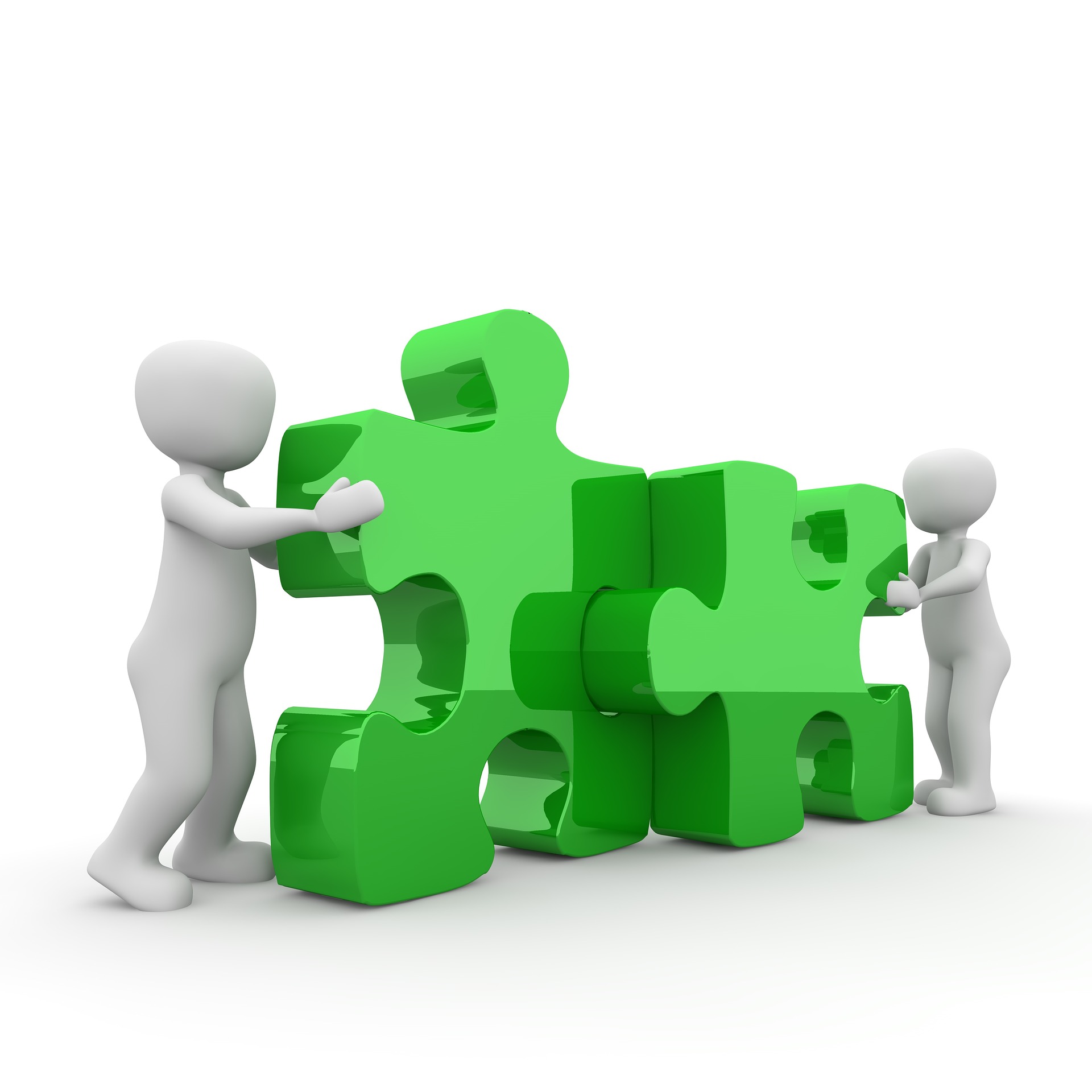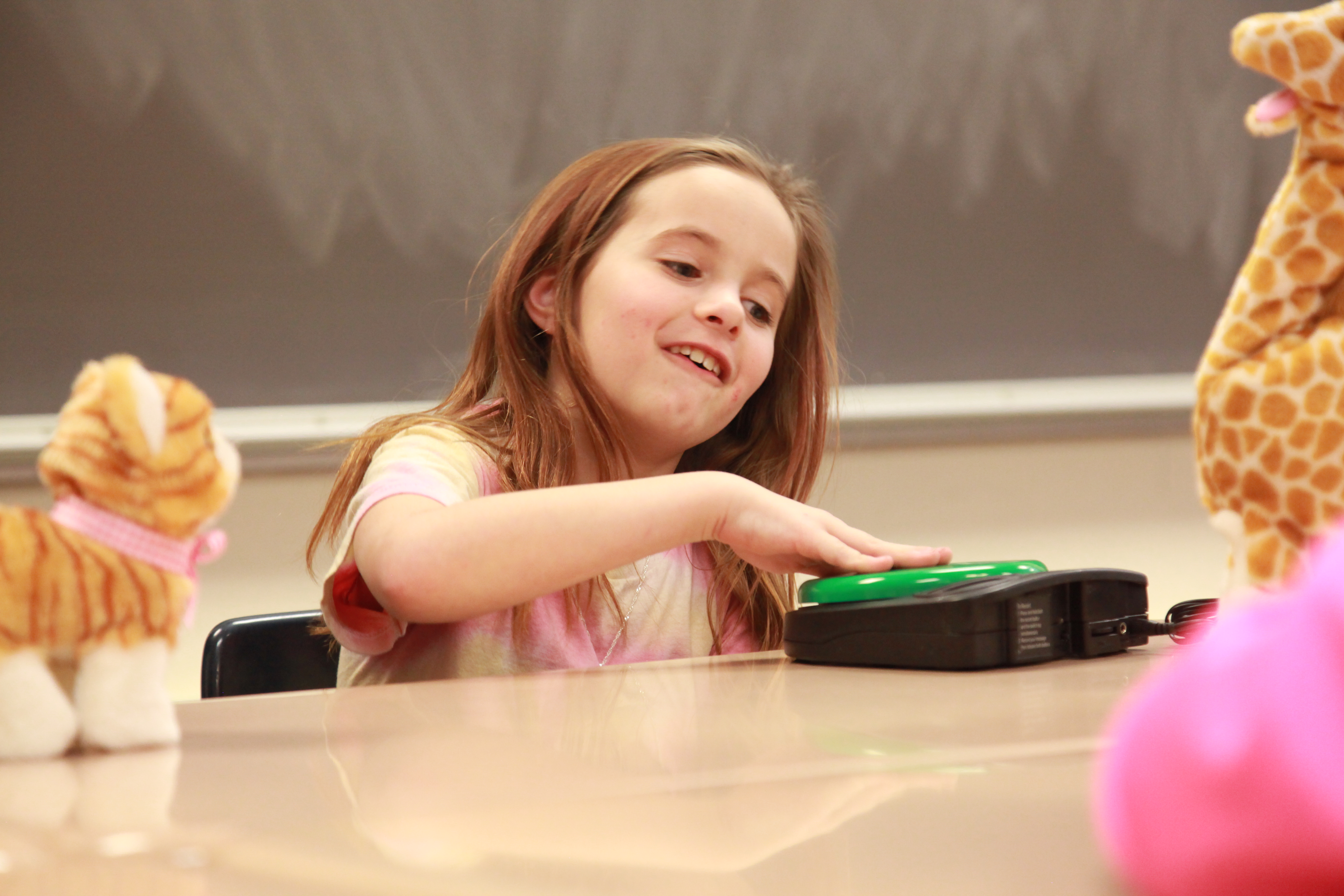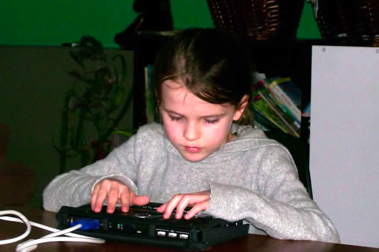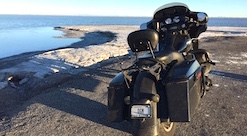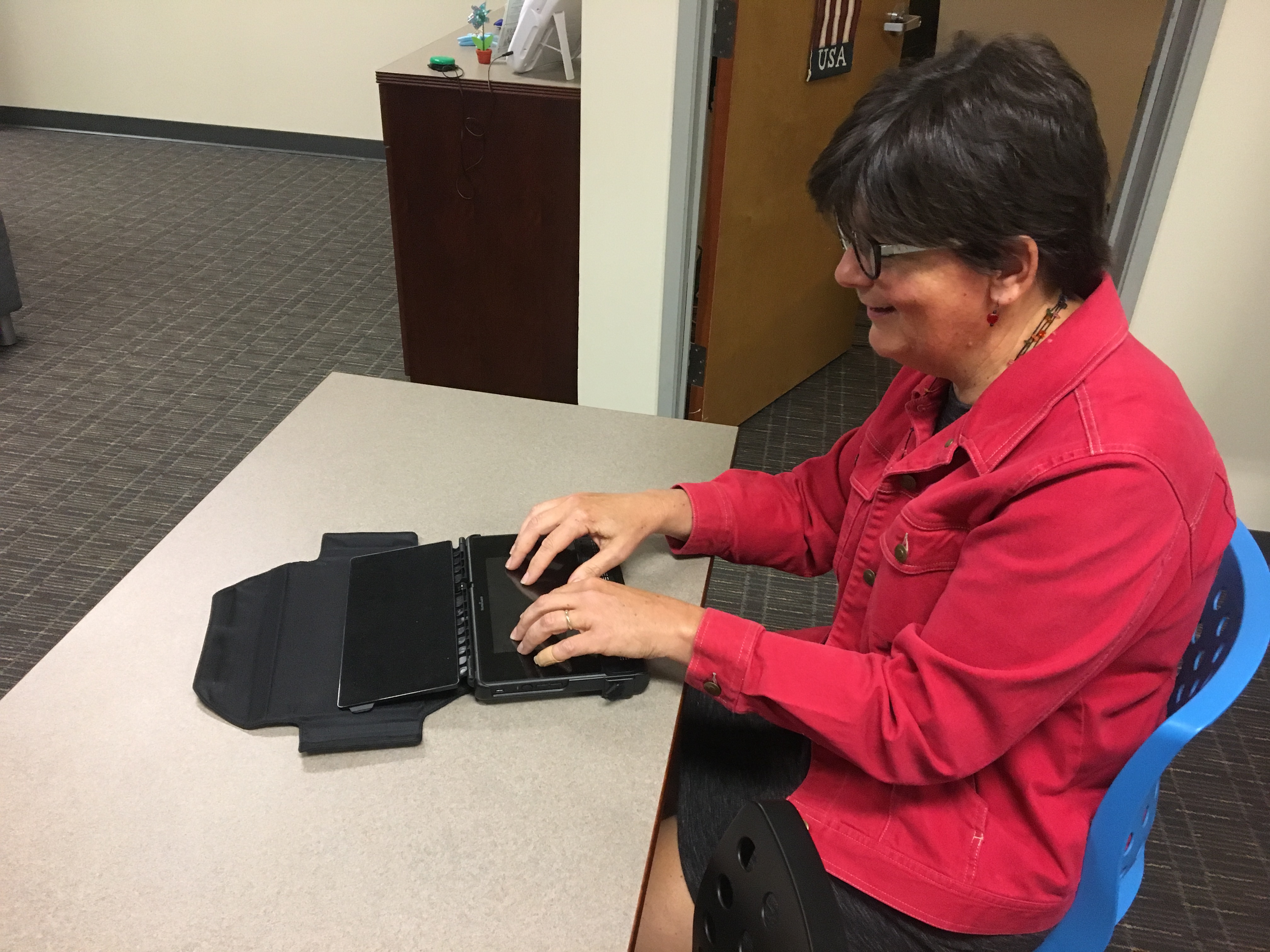
As the specialist at PATINS for Blind/Low Vision, I work with Braille, and its evolving technology. In an exercise in review (and humility), I decided to type this blog on one of the Braille devices that we provide in our lending library. Here is my first line attempt:
“My blog is due throughursday so i geed to startd.”
The device, a Braillenote Touch, is a Braille note taker created to fuse with an Android Tablet so that a student who uses Braille as a primary literacy media can access anything their sighted peers can access.
Watch me work at my speed on the device.
Watch more proficient users on the same device.
I learned to read and write Braille back in 1996 from a delightful teacher named Margaret, who had taught for many years at the Indiana School for the Blind. I struggled with e’s and i’s while writing Braille because they are mirror images of one another like b’s and d’s are in print. Margaret helpfully admonished, “You go up the hill and down to hell,” describing the orientation of the dots in “i” and “e”. I think of her every time my fingers pause at these litters, I mean, letters.
I read Braille as a visual code, rather than a tactile code, as do most sighted folks. The course I took taught the complete literary Braille code in one semester, and after this, I could read my students’ work, and compose documents on a mechanical Braille writer for them to read. It was much easier than I anticipated--mainly learning an alphabet code ala Kindergarten plus punctuation, plus 250 or so contractions (like learning stenography), but, nevertheless, accomplished in a single semester.
If you’re looking for a fun brain challenge, the app Braille Tutor is free, and will guide a sighted user through the code. Many folks look at others using Braille as “amazing” or “inspirational”, but they just learned to read like the rest of us, one letter, word, and corrected mistake at a time. If you’ve learned all the ins and outs of that current game on your device, I’m sure you can learn Braille.
When I go back to typing in Braille, using 8 keys, my muscle memory kicks in, for the most part, but I am wretchedly slow, and the letters that were difficult for me before remain hard. It really is like riding a bike, but y’all could probably walk beside me and keep up, and I definitely should wear a helmet. Throughout my years of teaching, the more I used it, the faster and more proficient I became.
Even more than reigniting the synapses in my brain reserved for Braille, this exercise reminds me of the need to consider that the learners (students and teachers) that I’ll be working with are ready to fail and ready to achieve. As C.S. Lewis put it:
“Failures, repeated failures, are finger posts on the road to achievement. One fails forward toward success.”
How are you setting up your learning environments for failure this year? How will you create situations where students will struggle? How will you model reframing a failure into a learning opportunity? Here’s a list of resources to spur you on to failure.
I’m going to break out the Braille device once a week. I kind of like the word “throughursday” that came out in my first attempt. Sounds like the day you need to struggle through to get to Friday.
Wishing you all a year full of epic failing forward opportunities!

